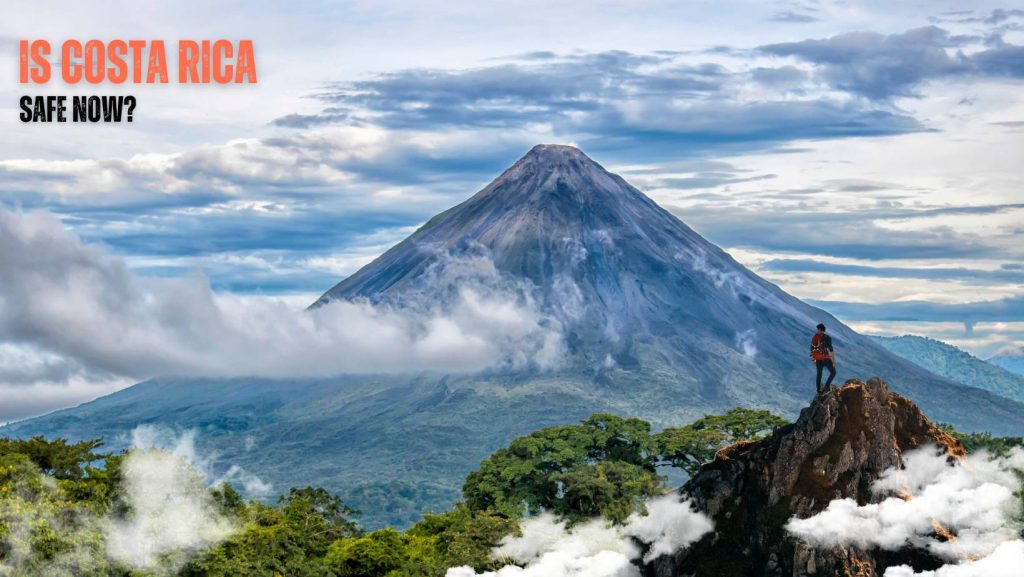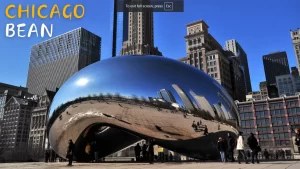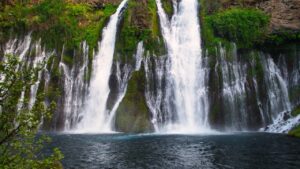Costa Rica has earned its place as one of the most desirable destinations for U.S. tourists. Famous for its pristine beaches, rich biodiversity, cloud forests, and adventurous activities such as surfing, whitewater rafting, and volcano hiking, it draws millions of travelers each year. The nation’s eco-tourism industry has flourished, making it especially appealing to Americans who want both adventure and relaxation.
Where to Stay in Costa Rica – Best Places to Stay and Areas to Visit
But alongside the excitement comes an important question: Is it safe to travel to Costa Rica right now from USA? With headlines about global travel safety, crime in Central America, and environmental risks, many travelers feel the need to double-check before booking flights. Understanding Costa Rica’s current safety situation helps ensure a memorable trip without unwanted surprises.
Is Costa Rica Safe to Travel Right Now?
The short answer is yes — Costa Rica is one of the safest countries in Latin America for foreign visitors. Unlike some of its Central American neighbors, Costa Rica has a stable democracy, no standing military, and a strong reputation for welcoming tourists. Most U.S. visitors report safe, enjoyable vacations.
That said, safety doesn’t mean “risk-free.” Petty theft, scams targeting tourists, and occasional violent crimes can occur, particularly in urban areas and crowded tourist hotspots. Most problems arise when visitors fail to take standard precautions, like leaving bags unattended on beaches or walking alone in poorly lit areas.
So, is it safe to travel to Costa Rica right now? For the majority of U.S. tourists, yes — as long as you remain alert, follow safety tips, and respect local guidelines.
Latest U.S. State Department Travel Advisory for Costa Rica
The U.S. State Department travel advisory is one of the first things U.S. tourists should review before any trip abroad. Currently, Costa Rica is under a Level 2: Exercise Increased Caution advisory, which is relatively low risk compared to countries with Level 3 or Level 4 warnings.
- San José and Limón are specifically mentioned for elevated crime risks, including theft, robberies, and gang-related violence in some neighborhoods.
- Tourist-heavy areas like Guanacaste, La Fortuna, and Manuel Antonio remain safe, though opportunistic theft is possible.
The advisory also recommends avoiding displaying expensive items, securing personal belongings, and using reliable transportation. For most U.S. travelers, these precautions are more than enough to ensure a safe trip.
Common Safety Concerns for U.S. Tourists in Costa Rica
Petty Crime and Theft
Pickpocketing and bag snatching are the most common issues reported by tourists. Thieves often target busy bus stations, markets, and beaches where travelers may be distracted. Rental car break-ins are another concern, as criminals sometimes spot tourist vehicles and steal visible belongings. Keeping valuables hidden, using hotel safes, and avoiding flashy jewelry can reduce risks significantly.
Violent Crime Risks
Violent crime in Costa Rica is generally limited to certain urban areas and is rarely directed at tourists. However, isolated cases of armed robbery or assault do occur, especially late at night. Travelers are encouraged to stick to populated, well-lit areas and avoid risky neighborhoods after dark. Compared to many other countries in the region, Costa Rica remains much safer for foreigners.
Road Safety and Driving Conditions
Driving in Costa Rica can be a challenge for Americans unfamiliar with local conditions. Many rural roads are unpaved, narrow, and winding, with limited signage. Poor lighting at night and heavy rains can make travel more dangerous. Accidents are relatively common, so if you plan to drive, opt for a 4×4 vehicle, avoid nighttime road trips, and always purchase comprehensive car insurance.
Health & Medical Safety in Costa Rica
COVID-19 Situation in 2025
Costa Rica has successfully managed COVID-19, and travel restrictions have been lifted. However, depending on your airline or transit country, some requirements like proof of vaccination or health insurance may still apply. Checking updated guidelines before flying is essential.
Mosquito-Borne Illnesses
Costa Rica’s tropical climate makes it a breeding ground for mosquitoes that spread diseases like dengue, chikungunya, and Zika. Outbreaks occur seasonally, especially during the rainy season. Carrying insect repellent, wearing long sleeves, and choosing accommodations with air conditioning or mosquito nets are simple but effective precautions.
Medical Facilities & Emergency Care
Costa Rica boasts one of the strongest healthcare systems in Latin America. In San José and other major cities, hospitals are modern and well-equipped, with English-speaking doctors available. However, rural areas may lack advanced facilities. For this reason, purchasing travel insurance with medical evacuation coverage is highly recommended. U.S. tourists should also keep a list of hospitals and clinics near their travel destinations.
Natural Disasters & Weather Risks in Costa Rica
Costa Rica’s stunning landscapes come with certain environmental risks.
- Earthquakes & Volcanic Activity: The country lies on the Pacific Ring of Fire, making earthquakes possible. Volcanoes like Arenal and Poás are closely monitored, and warnings are issued if activity increases.
- Flooding and Landslides: The rainy season (May–November) often brings flash floods and road closures in rural or mountainous regions. Landslides can affect travel routes unexpectedly.
- Best Time to Visit: December to April, Costa Rica’s dry season, is the safest and most pleasant time for U.S. travelers. Weather is stable, roads are more reliable, and natural hazards are minimal.
Safety in Popular Tourist Destinations in Costa Rica
San José (Capital City)
San José is vibrant, with museums, markets, and nightlife, but it also has neighborhoods with higher crime rates. Tourists should stay in reputable hotels, avoid isolated streets after dark, and use trusted transportation instead of wandering at night.
Jaco & Manuel Antonio
These Pacific beach towns are tourist hubs with plenty of nightlife, tours, and water sports. While generally safe, they attract petty thieves targeting distracted tourists. Lock up valuables, avoid leaving items unattended on the sand, and stay in well-reviewed accommodations.
Arenal & Monteverde
Adventure travelers love Arenal’s volcano region and Monteverde’s cloud forests. These areas are known for low crime rates and well-managed eco-tourism infrastructure. Guided tours are recommended for hiking and exploring, as local guides know how to keep visitors safe from both natural and human risks.
Safe Travel Tips for U.S. Visitors in Costa Rica
- Avoid Isolated Areas: Remote beaches and rural spots are best visited during the day and with groups.
- Use Trusted Transport: Stick to official taxis, ride-share apps, or hotel-arranged drivers. Unofficial taxis are riskier.
- Protect Valuables: Use anti-theft bags, money belts, and leave passports secured in safes. Carry only copies when exploring.
- Stay Updated: Subscribe to the U.S. Embassy’s STEP program for safety alerts and check local weather conditions daily.
Travel Insurance & Emergency Contacts in Costa Rica
Travel insurance is not optional in Costa Rica — it’s a necessity. Coverage should include:
- Emergency medical care and evacuation
- Theft, loss, or damage of belongings
- Flight cancellations and delays due to weather or natural disasters
Emergency Numbers & Contacts:
- U.S. Embassy in San José: +506 2519-2000
- Costa Rica Emergency Services: Dial 911
- Tourist Police Hotline: +506 2299-0649
For U.S. travelers who follow safety guidelines, purchase insurance, and stay alert, the country remains a top choice for 2025.
FAQs
1. Is it safe to travel to Costa Rica right now from the USA in 2025?
Yes, it is generally safe to travel to Costa Rica right now from the USA. The country remains one of the most stable and tourist-friendly destinations in Central America. However, travelers should take basic precautions against petty theft, stay informed about local advisories, and use common sense, especially in urban areas.
2. What is the current U.S. State Department travel advisory for Costa Rica?
As of 2025, Costa Rica is under a Level 2: Exercise Increased Caution advisory. This means U.S. citizens can travel safely but should be aware of crime risks, particularly in San José and Limón. Tourist-heavy areas are considered much safer but still require vigilance.
3. What areas of Costa Rica should tourists avoid for safety reasons?
While most of Costa Rica is safe, tourists are advised to avoid isolated parts of San José at night, certain neighborhoods in Limón, and remote areas without guides. Beaches are generally safe, but leaving belongings unattended increases theft risks.
4. Is Costa Rica safer than other Central American countries?
Yes, Costa Rica is considered one of the safest countries in Central America. Unlike its neighbors, it has no standing military, a strong democratic system, and a long history of peaceful tourism. That said, visitors should still be cautious of petty crime.
5. Are U.S. tourists commonly targeted in Costa Rica?
No, violent crime against U.S. tourists is rare. Most incidents involve petty theft, scams, or pickpocketing in busy areas. Tourists who take standard precautions — like avoiding isolated areas at night and securing valuables — rarely encounter problems.
6. Is road travel safe in Costa Rica for U.S. visitors?
Road travel is safe but can be challenging. Many rural roads are unpaved, narrow, and poorly lit. Renting a car is common, but U.S. visitors should drive cautiously, avoid night driving, and consider a 4×4 vehicle. Using GPS and sticking to main highways increases safety.
7. What health risks should U.S. travelers know about in Costa Rica?
Costa Rica has excellent healthcare, but tourists should be aware of mosquito-borne illnesses like dengue and Zika. While COVID-19 restrictions have eased in 2025, travelers should check entry requirements. Travel insurance with medical coverage is highly recommended.
8. Is it safe to travel to Costa Rica right now for families and children?
Yes, Costa Rica is safe for families with children. Popular destinations like Arenal, Monteverde, and Manuel Antonio are well-developed and family-friendly. Parents should supervise children closely in crowded or beach areas and use reputable tour operators for outdoor activities.
9. Is Costa Rica safe for solo travelers from the USA?
Yes, solo travel in Costa Rica is generally safe. Many U.S. backpackers and solo adventurers visit each year without issues. However, solo travelers should avoid walking alone at night, be mindful in urban areas, and join group tours for activities in rural or remote regions.
10. Do I need travel insurance to visit Costa Rica safely?
While not legally required in 2025, travel insurance is strongly recommended for U.S. tourists. It covers medical emergencies, theft, natural disasters, and trip cancellations. Having insurance provides peace of mind and ensures a safer, stress-free trip.






